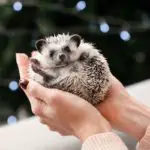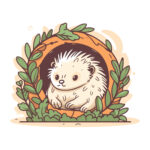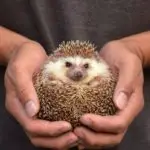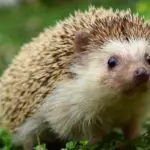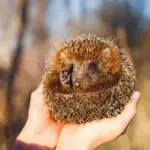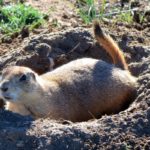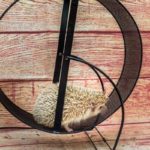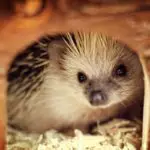There are many ways you can discover if you have crossed paths with a hedgehog, or if one is living near you.
You can look for hedgehog tracks, of course, but a more sure fire way to know if you and a hedgehog are actually neighbors is to keep a keen eye out for hedgehog droppings.
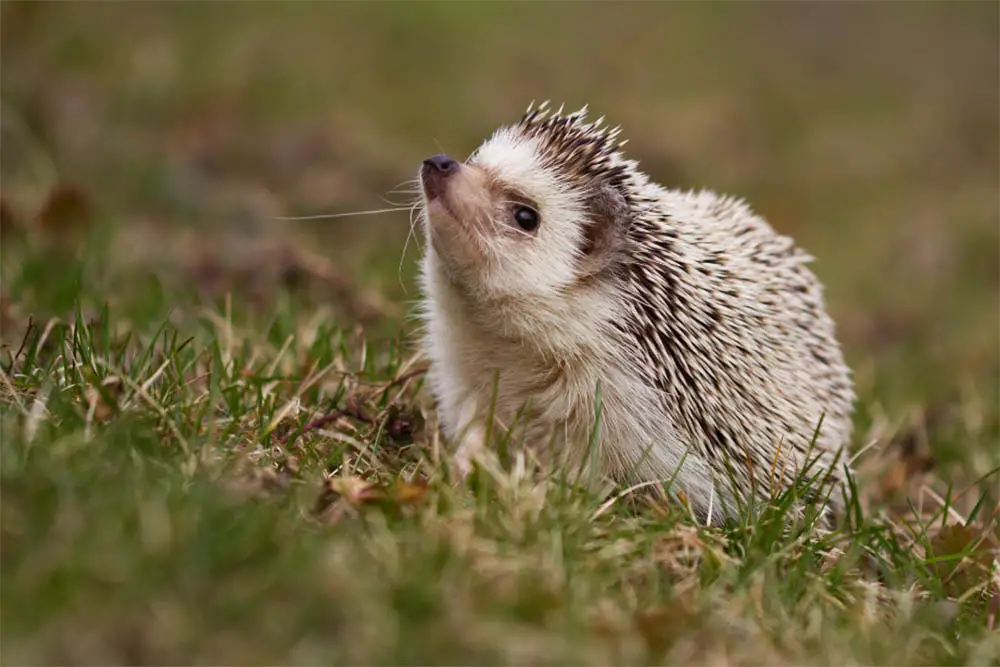
They are not always the same though, the color, texture, and size of the droppings will depend on the diet of the individual hedgehog.
Typical hedgehog droppings are dark brown, sometimes gray, or even black. They are generally firm, and are often packed with the exoskeletons of invertebrates such as beetles, which are a super tasty snack to hedgehogs.
Oftentimes a singular dropping will be on its own, and it will be cylindrical, sometimes even tapered. Hedgehog droppings can often look like a dark slug on the ground. These droppings can range in length from 15 millimeters to 50 millimeters.
How to identify hedgehog poo
Hedgehog droppings are often a small sausage shape, similar to a small dark slug, they will usually have one or both ends pointed slightly as you would typically expect. They are usually almost sparkly in the sunlight, as they will have bits of invertebrate skeletons in them.
Hedgehogs love to eat beetles, and their skeletons are often found in their droppings.
However, other foods such as worms and slugs play an even bigger part in their diet too, in the case that a hedgehog makes these a major part of their diet they may be lighter in color, and they may also lose their sparkle if there is no invertebrate skeleton in them.
Hedgehog dung will often be found on their own, they will not be found in clusters such as rabbit poo, or rodent poo.
They are often black or dark brown in color, often 1.5 to 5 centimeters in length, and will often contain insect body parts in them as a good indicator.
If you want to go out foraging for hedgehogs, using their dung as an indicator of where they have been in fields, lawns, and grasslands are a good place to start.
Other animals will also leave droppings in similar places, such as foxes, but their dung is dark, long, twisted, and often left in prominent locations, if the dung belongs to a fox, you may see fur, feathers, or other remains.
Rodent droppings are much smaller than that of a hedgehog, and so are not going to be easily mistaken for hedgehog dung, they are also rarely deposited in the open, so it would be very unlikely that you would spot rodent poo near hedgehog poo.
Why do people get excited about hedgehog poo?
Some people seem to get excited over finding hedgehog droppings, why is this? Well, hedgehogs are nocturnal, so they are out and doing their businesses in the nighttime, and they will usually sleep during the day.
So, hedgehog lovers won’t often see hedgehogs to know if they survived the winter months.
Hedgehog droppings, however, are a clear indicator that your local hedgehogs survived the tough winter months and are now out and about living their lives once more.

Once the first hedgehog dung is spotted in the spring, hedgehog enthusiasts may get excited because this means that the hedgehogs survived and are now on the path to mating, which means that it will not be long until there are plenty of baby hedgehogs roaming around.
Where are you most likely to find hedgehog poo?
In many corners of the world where hedgehogs roam, hedgehogs may often be found in gardens, and so it is possible that they may leave droppings in your garden.
However, this does not mean that hedgehogs live in your garden. Many animals who roam gardens, and the areas around our homes, are territorial. They will use scent tracking using urine, faces, and so forth to make their mark, stating that this territory is theirs.
However, hedgehogs are not territorial, and so they do not use their dung for scent marking. They also do not use ‘latrines’, nor do they go back to the same places to defecate, such as deer and badgers do.
Hedgehogs are more free spirited in where they void their bowels, going wherever and whenever the urge takes them to do so. This can even be on the run like horses.
If hedgehogs eat in your garden, or around your home, you will likely find feces around there, as nothing can go in without coming out right. It is not uncommon for you to see dung in food dishes or water where hedgehogs feed and hydrate.
What not to do if you come across hog poo.
If you want to investigate some hog poo when you come across it, you can take a closer look at it, have a poke with a stick if you want, as breaking it up may give you some information on the health of the hog.
However, do not touch it with your bare hands, hedgehog dung can contain very nasty bacteria and parasites that you do not want to get on you.
If you have a hog house, do not clean it up if you have a resident hedgehog. They do not mind sleeping where they defecate, however they hate being disturbed.
Hog poo problems.
Much like anyone and anything, hedgehogs can have toilet troubles too, sometimes the things they eat impact their diet and therefore their dung.
This means their poo can look hard and green, a bit like seaweed, this can often be seen as the result of a pre- or post-hibernation body purge.
Their dung can also be light brown and sloppy, this can be due to a new home, however, it can also be that they have drunk some milk, and hedgehogs are lactose intolerant.
It could be green and slimy, which is a warning sign of a parasitic infection, this is one to keep an eye on. If you see it too often, call your local wildlife care team to ensure that the hedgehog is okay.

